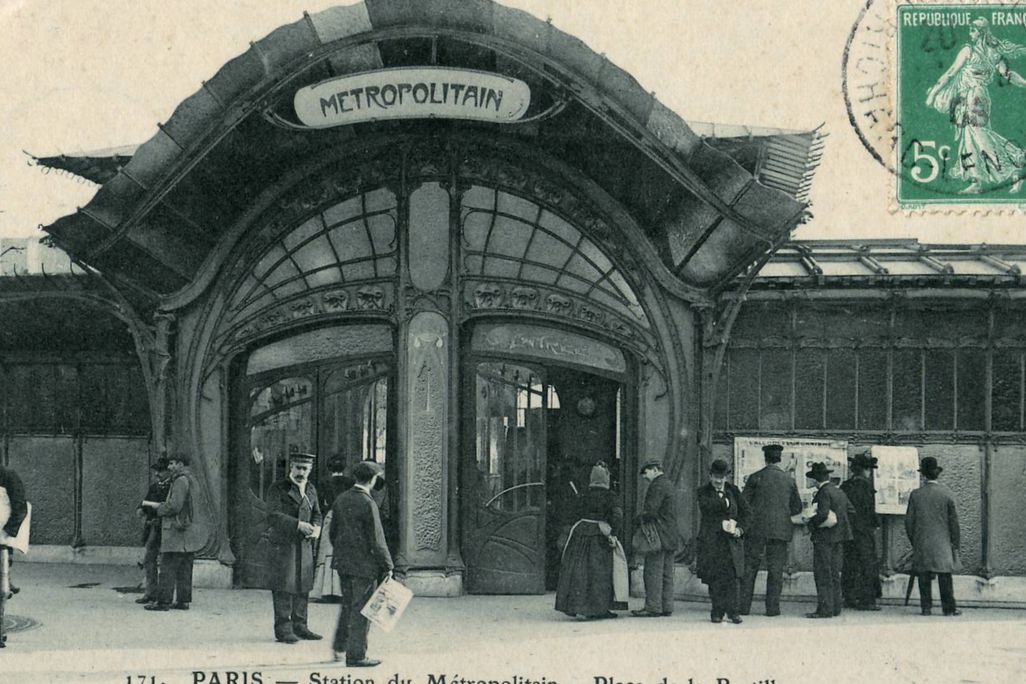The Architect Who Designed the Iconic Entrances to the Paris Métro Is Finally Getting the Attention He Deserves
When Hector Guimard’s subway designs were unveiled in the early 1900s, the public rejected his Art Nouveau style. Soon, a new museum devoted to his work will open in the city

Today, Paris’ Art Nouveau Métro station entrances are iconic fixtures of the French capital. But when they were unveiled in the early 1900s, locals weren’t impressed. Many of the controversial designs were destroyed, and only 88 of the original 167 survive today.
Characterized by green cast iron, glass and the iconic Métropolitain signs, the entrances were designed by Hector Guimard. Soon, the architect will be the subject of a new museum housed in the Hôtel Mezzara, a building he designed in Paris.
Quick fact: What is Art Nouveau?
The style, which thrived between roughly 1890 and 1910, takes inspiration from nature and is characterized by flowing lines.The project is the brainchild of Fabien Choné, president of the consulting company Fabelsi and the Hector Guimard Diffusion, and Nicolas Horiot, an architect and the president of Le Cercle Guimard, an association devoted to preserving Guimard’s work.
According to a statement from Le Cercle Guimard, the partners aim to restore the unoccupied, government-owned hotel and design a museum “worthy of one of the greatest architects of the turn of the 20th century.” When it opens in 2027, it will display objects and archival materials such as cast ironworks, pottery and Métro entrances, reports Le Monde’s Philippe d’Indevillers.
Born in Lyon, France, in 1867, Guimard became a pioneer of the French Art Nouveau movement. His designs featured “sinuous lines and asymmetrical biomorphic shapes,” wrote Smithsonian magazine’s Susannah Gardiner in 2022. The self-proclaimed “architect of art” was one of France’s best-known designers by the early 1900s.
/https://tf-cmsv2-smithsonianmag-media.s3.amazonaws.com/filer_public/21/b2/21b26fd0-5ffe-43f3-a29b-bbd415115243/hotel_mezzara.jpeg)
Guimard designed mansions and the furnishings that went inside them, such as curtains, chairs and picture frames. As Yao-Fen You, curator of a 2022 exhibition on Guimard at the Cooper Hewitt, Smithsonian Design Museum, told Smithsonian, “He was designing a lifestyle.”
He gained admirers at home and abroad—Salvador Dalí later called his Métro entrances “divine” and painted a tribute to the architect—but most contemporary Parisians rejected his Art Nouveau style.
“There was great opposition to Guimard’s Métro entrances,” Choné tells the Guardian’s Kim Willsher. “While visitors saw them as marvellous symbols of the belle époque Métro, Parisians criticized it as what they called ‘spaghetti style’ and couldn’t understand why tourists liked them.”
After World War I, Modernist architecture dominated in Europe. The public continued to criticize Guimard’s style, and “each time the city did any work on the streets, they got rid of Guimard’s designs,” says Choné to the Guardian.
/https://tf-cmsv2-smithsonianmag-media.s3.amazonaws.com/filer_public/59/77/59775dc6-b032-4722-93b0-f84536f855c6/gettyimages-686833060.jpg)
Guimard and his wife, Adeline Oppenheim Guimard, who was Jewish, fled Europe for New York in 1938. By the time the architect died there in 1942, France had forgotten much of his work. When his wife attempted to bequeath their Paris home, the Hôtel Guimard, to the government, officials declined to accept.
While museums across the globe have dedicated exhibitions to Guimard, his lack of recognition in Paris is “absurd,” Choné tells the Guardian. Now, the team behind the forthcoming Guimard Museum seeks to right this wrong. The project is part of a decades-long effort to conserve Guimard’s work.
“After the second world war, Guimard was completely forgotten,” Horiot tells the publication. “The revival started in 1970 with an exhibition in New York, but it was a step-by-step process. We see this museum as repairing an injustice done to Guimard.”
/https://tf-cmsv2-smithsonianmag-media.s3.amazonaws.com/accounts/headshot/Sonja_headshot.png)
